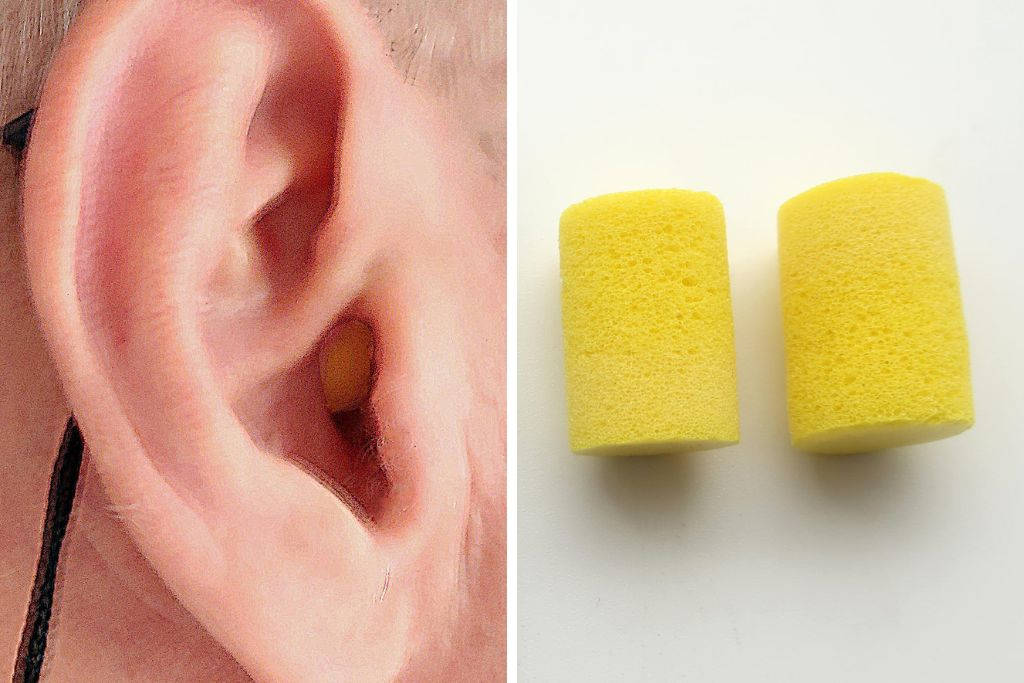
3M EAR Classic are the original foam earplugs. They were developed in the late 60s by a chemist, Ross Gardner Jr., who by accident discovered that the sealants he was working on had unusual energy-absorbing properties.
The discovery of these energy absorbing resins (E-A-R) spawned off a completely new project that eventually led to the development of the first PVC foam earplugs.
And so in 1972, the cylindrical yellow EAR Classic hit the market.[1]
(The company Ross worked for eventually ended up in the fold of the 3M Company.)
Nowadays you’ll find a plethora of foam earplugs (mostly PU foam) in various colors, sizes and shapes.
Need torpedo-shaped earplugs? Readily available.
By comparison, these “PVC-barrels” look like a product from a bygone era.
Yet among all that competition and more than 50 years later, the bright-yellow cylindrical EAR Classic are still being sold, and they are still made from that special PVC foam.
Contents
What makes these earplugs still special?
The PVC foam formulation they came up with, while initially appearing a bit stiff, exerts less pressure in the ear than most tapered earplugs.
Five minutes after insertion, I have forgotten I have earplugs in my ear.
Thanks to their cylindrical shape, these earplugs still work OK even when they are not inserted very deeply. They are quite forgiving when it comes to insertion depth.
And, most importantly, inserted well, the EAR Classic shine with an astonishing ability to reduce all noise, including low frequency noise (LFN)!
For many years, I used and enjoyed two other brands of cylindrical PVC earplugs, Flents Quiet Please and Mack’s ThermaFit. Many of my readers loved these earplugs as much as I did.
Unfortunately both distributors have changed their foam composition and their size.
So I decided to revisit and test 3M’s EAR Classic (which I had tried years ago).
What I have found is that the performance of the Classic is virtually identical to what I experienced with the original Flents Quiet Please and Mack’s ThermaFit formulations.
And the EAR Classic are as comfortable, so they are now my recommendation for cylindrical earplug lovers—and in particular for folks seeking relief from low frequency noise.
PU foam earplugs vs the EAR Classic

Your typical roll-down foam earplugs are made of PU and tapered. They initially appear softer than the EAR Classic (NRR 29) and some of them have NRRs of up to 33.
But, with most of them, I find it hard to get even close to the LFN-blocking ability of the Classic, regardless of their NRR and regardless of how deep I insert them.
And, the ones that do work reasonably well against LFN, only tend to do that when inserted at a depth at which they exert too much pressure for me to have them in for a night.
Now this is not to knock tapered PU earplugs:
Some of my favorite tapered earplugs are very comfortable and very effective at reducing noise; in the mid frequencies in particular, they are even more effective than the EAR Classic.
I recommend that you additionally find some tapered earplugs that fit you well. I prefer changing between different earplugs to avoid pressure points.
But, when it comes to low frequency noise reduction, I have yet to find any roll-down “PU foamies” that beat cylindrical PVC foam earplugs.
How about cylindrical PU foam earplugs?
In addition to many tapered earplugs, I have tried cylindrical PU earplugs as well: When one of my former favorite earplugs changed from PVC to PU foam, they maintained the cylindrical shape. Unfortunately, the new formula became uncomfortable in a hurry.
PU earplugs, while soft to the touch, are typically quite a bit denser than the EAR Classic.
By tapering them and varying the length, excessive pressure deep in the ear canal can be avoided. With the PVC foam of the Classic, this seems to be unnecessary.
Noise Reduction
Note: The following chart and discussion pertain to my experience using these earplugs against everyday noise (e.g., at night in my bedroom). This section is not meant to evaluate performance as a hearing protector. For hearing protection, please refer to the published noise reduction ratings and use the instructions on the package.
As mentioned, I have been an avid user of two other brands of cylindrical PVC earplugs, Flents Quiet Please and Mack’s ThermaFit. Unfortunately, both of them have changed. One now uses a different PVC foam composition, the other one has changed to PU.
Fortunately, with the EAR Classic, I am getting the same comfort and the same reliable attenuation of low-frequency noise that made those other earplugs (before the formula changes) so effective for sleep in the city.
It is good that the original foam earplugs are still available.
In the following chart, you can see how the 3M EAR Classic performed in my ears (against pulsed noises, 1/3rd octave steps) and how they compare to the original Flents Quiet Please and Mack’s ThermaFit (before the formula changes):

The higher the line, the better.
There is very little (if any) difference between 3M’s EAR Classic (red line), Flents Quiet Please (green line), and Mack’s ThermaFit (blue line), especially when considering that I tested the other two plugs several years ago.
The main difference seems to be the color. 🙂
Low frequency noise reduction (noise below or at 250 Hz) is >35 decibels for the EAR Classic, and very similar to that of the other two earplugs.
What does this mean in practice? Well, in my ears the EAR Classic really do help against footsteps from upstairs neighbors, truck rumble, LFN generator noise, and hums.
And across virtually the entire tested frequency range, I am getting >30 decibels (apart from the slight dip at 1250 Hz) noise reduction. Moreover, the noise reduction is fairly even, which is great.
For me, many foam earplugs reduce mid-frequency and treble noise quite a bit more than bass noise.
Often this isn’t a problem and I won’t even notice it. The room appears quiet because all the little higher pitched noises are very effectively muffled and even lower frequency noise is sufficiently attenuated.
But, when trucks are passing by or someone is stomping on top of me, I notice the difference right away.
Even noise reduction is hard to achieve, which makes the EAR Classic a gem.
I’d like to emphasize: to get to that even noise reduction, including low frequency noise reduction, I need to insert my earplugs completely, not just 50%.
Here is the earplug in my ear:

To assess on the fly that I have inserted both earplugs well and am getting effective LFN noise reduction, I use a fridge/freezer door slam test. I recommend you try to find something similar in your house.
To learn more about earplug insertion, also check my post How to Put in Foam Earplugs.
Size and formula variants of the EAR Classic

From left to right: EAR Classic plus, Classic regular, Classic small
My recommendation is that you go with the regular 3M EAR Classic, unless you have very good reason not to. It was designed to fit most people.
Only if you find you can’t fit the regular Classic because you have an exceptionally narrow ear canal, try the Classic Small.
The Classic Plus might be challenging if you are a side sleeper, unless you have a very long ear canal.
Comparison table (diameter and length as per my own calipers)

Remarks re EAR Classic II
I originally tried the EAR Classic many years ago, but at the time good PVC alternatives in more consumer-friendly quantities were readily available (e.g., Flents Quiet Please), so I didn’t get into them. Now these alternatives are no longer available / have changed their formula.
Then while traveling, I purchased another box of what I thought were the EAR Classic. From that purchase, I gathered they were harder and smaller than Quiet Please or ThermaFit, my favorite PVC earplugs at the time.
To my surprise, my recent purchases felt different: now the Classic felt just fine, just like my former favorites.
It turns out that I had inadvertently gotten a variant of the 3M EAR Classic, the EAR Classic II, which is indeed a bit harder and smaller. These earplugs appear to be a niche product designed for regional markets. The Classic II, while not bad, doesn’t perform nearly as well. I recommend you stick to the Classic.
Conclusion
I hope the 3M EAR Classic keep getting produced for another 50 years.
When it comes to cylindrical PVC foam earplugs, they are the first and perhaps will be the last man standing.
The ability of these comfortable low-pressure foam barrels to effectively reduce all noise, including low frequency noise, makes them a timeless gem. If you use foam earplugs, but haven’t tried the EAR Classic, you owe it to yourself to try them.
Remark: The EAR Classic are often sold in bulk. But, smaller vendors also offer them in consumer friendly quantities (50 pairs to 200 pairs). I recently ordered 50 pairs and received a plastic bag with 50 pairs, each in its own paper pillow pack. I like these pillow packs. They make for easy storage if you want to use the earplugs more than once.

Notes:
1. SafetyNow, “Do You Know the History of the 3M N95 and E•A•R Plug?,” Safety Now & Next (blog), March 7, 2022, https://www.3m.com/blog/en_US/safety-now/science-of-safety/do-you-know-the-history-of-the-3m-n95-and-ear-plug/.

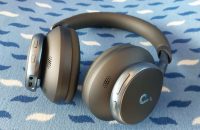
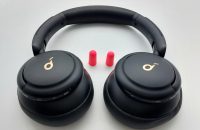
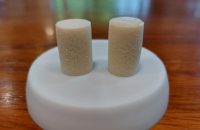
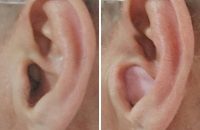
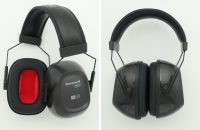
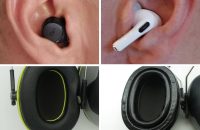
What a great article. I’ve been working in loud factories for years and regular earplugs were extremely painful. About 15 years ago I discovered that e.a.r. had a small size (also called Amigo) and I’ve used them exclusively ever since.
Hello Jason,
many thanks for your encouraging feedback.
It is quite impressive how meticulous they were with their sizing and how they ultimately ended up with three different ones.
All the best.
How do you get the earplugs out of your ears when they’re that deep?
Hello Helmetfan,
I keep my fingernails a bit longer; this allows me to grasp the earplugs (almost as if they were tweezers). If I cut my nails too short, it becomes more involved. By all means, only insert the earplugs to a depth you personally feel comfortable with!
I am sharing my personal insertion depth to give readers a hint about how I achieve excellent low-frequency noise reduction. You might get away with less insertion depth.
If you have a very long ear canal, you could alternatively go for the Classic Plus (described in the post), which would stick out a bit more.
All the best.
Thanks for this review! I’ve been chasing around the changes in earplug design like you, from Flents QuietPlease to Macks ThermaFit (I was even trimming one end off my remaining stock of these) to the OG 3M EAR Classic. Very happy with it, and moderately optimistic that they won’t change its materials or specs because it seems aimed at workplace use, with more rigorous standards/requirements. Fingers crossed!
Hello Jonathan,
thank you for your feedback. I’ll keep my fingers crossed as well.
There is another advantage to the Classic: As I understand it, 3M actually makes the raw material for these earplugs. If that is indeed still the case, there would be no third parties involved.
All the best.